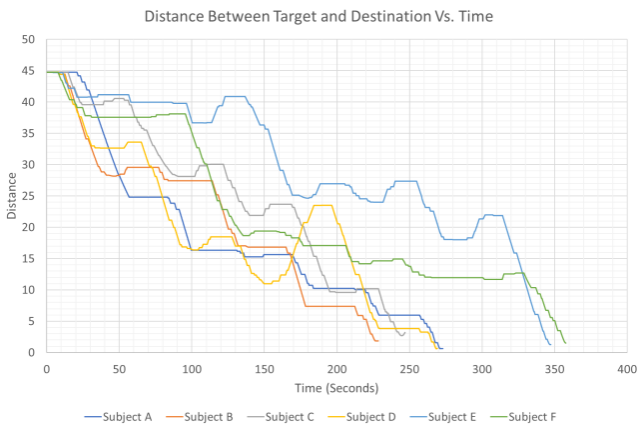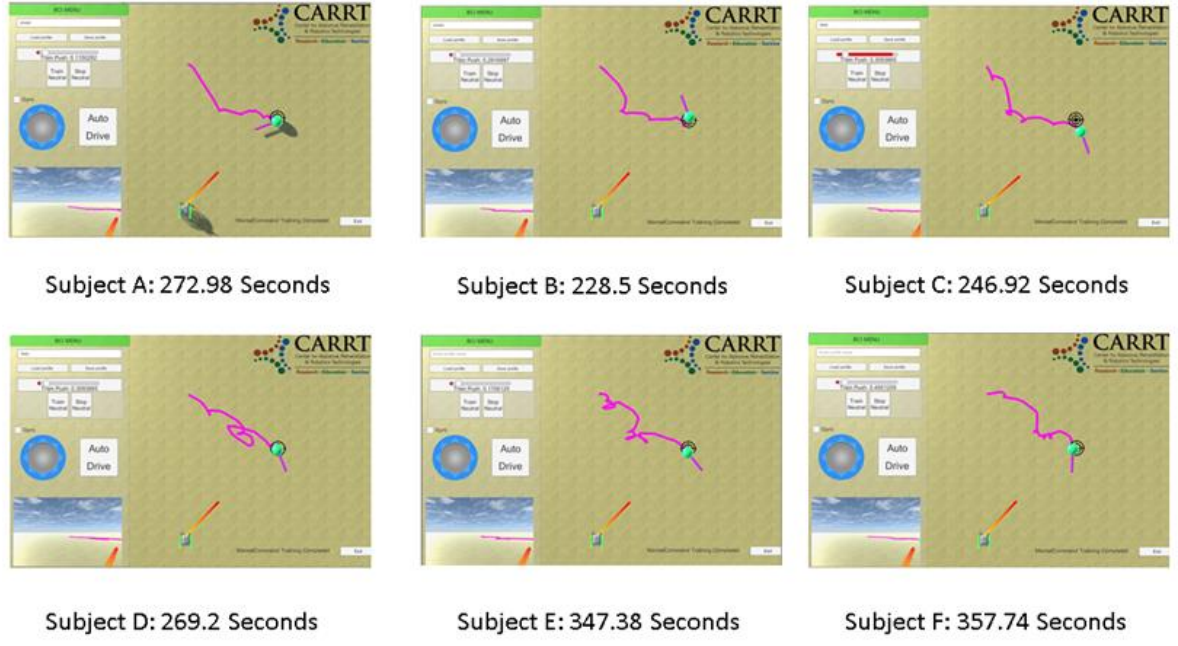
Brain-Computer interfaces (BCI) are widely used in reading brain signals and converting them into real-world motion. However, the signals produced from the BCI are noisy and hard to analyze. This paper looks specifically towards combining the BCI’s latest technology with ultrasonic sensors to provide a hands-free wheelchair that can efficiently navigate through crowded environments. This combination provides safety and obstacle avoidance features necessary for the BCI Navigation system to gain more confidence and operate the wheelchair at a relatively higher velocity. A population of six human subjects tested the BCI-controller and obstacle avoidance features. Subjects were able to mentally control the destination of the wheelchair, by moving the target from the starting position to a predefined position, in an average of 287.12 seconds and a standard deviation of 48.63 seconds after 10 minutes of training. The wheelchair successfully avoided all obstacles placed by the subjects during the test.
We fuse signals from different sensors to achieve better performance inobstacle avoidance. An array of 10 ultrasonic sensors are used along with the results of indoor segmentation to detect obstacles and navigate around them.
BCI-Mobility Assistance project simulation - Hands free wheelchair
BCI- Hands-free Wheelchair with moving objects detection
Indoor Semantic Segmentation - part 1
ndoor Semantic Segmentation - part 2

Subjects were able to successfully navigate the target to the destination. The distance continued to decrease with time, zero distance means that the target has reached its destination.

The path of each target as controlled by the human subjects.
@article{mounir2020bci,
title={Bci-controlled hands-free wheelchair navigation with obstacle avoidance},
author={Mounir, Ramy and Alqasemi, Redwan and Dubey, Rajiv},
journal={arXiv preprint arXiv:2005.04209},
year={2020}
}
The work was supported by the Florida Department of Education - Division of Vocational Rehabilitation.
© This webpage was in part inspired from this template.